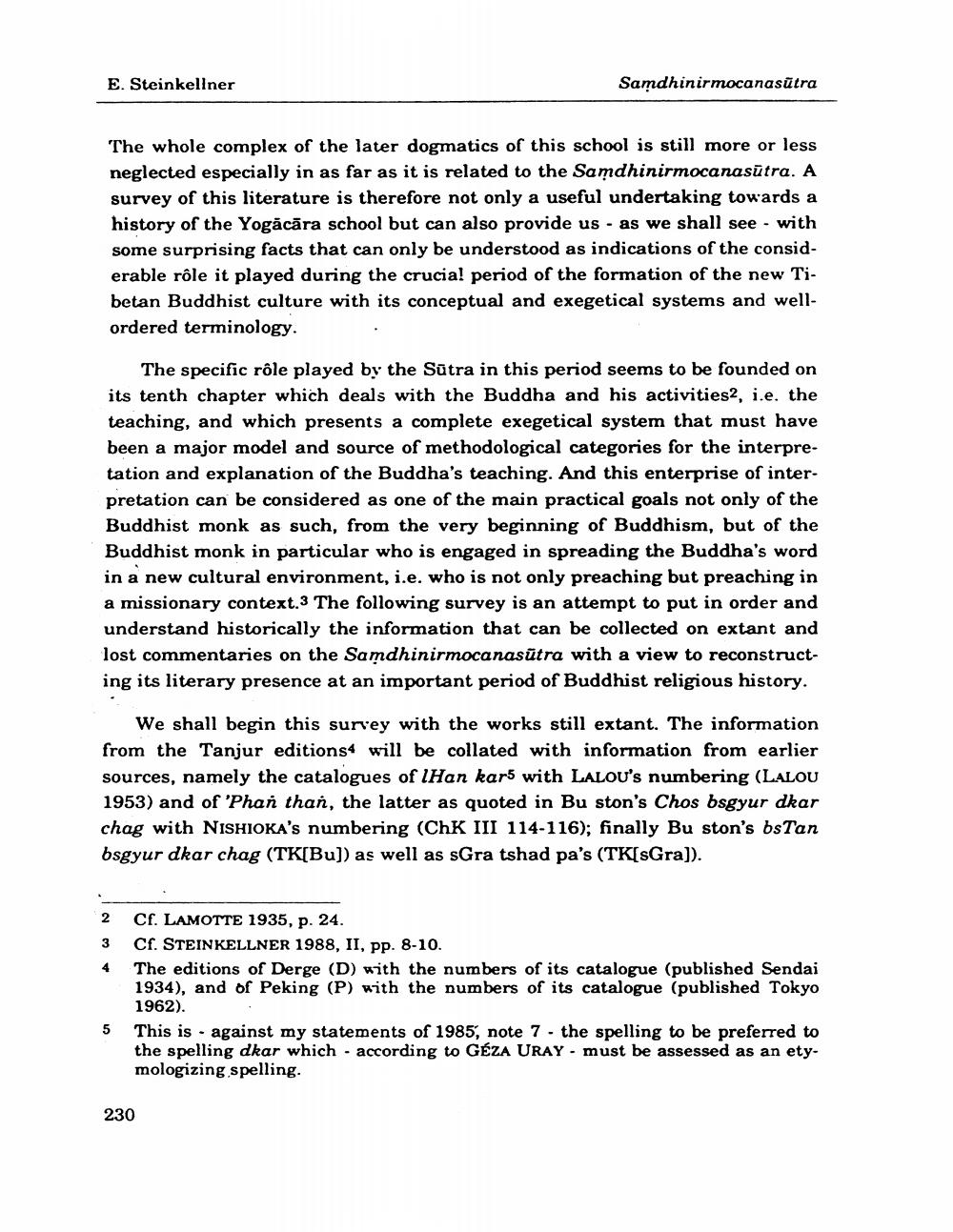Book Title: Who Is Byan Chub Rdzu Phrul Author(s): Ernst Steinkellner Publisher: Ernst Steinkellner View full book textPage 2
________________ E. Steinkellner Samdhinirmocanas@tra The whole complex of the later dogmatics of this school is still more or less neglected especially in as far as it is related to the Samdhinirmocanasütra. A survey of this literature is therefore not only a useful undertaking towards a history of the Yogacara school but can also provide us - as we shall see - with some surprising facts that can only be understood as indications of the considerable rôle it played during the crucia! period of the formation of the new Tibetan Buddhist culture with its conceptual and exegetical systems and wellordered terminology. The specific rôle played by the Sūtra in this period seems to be founded on its tenth chapter which deals with the Buddha and his activities2, i.e. the teaching, and which presents a complete exegetical system that must have been a major model and source of methodological categories for the interpretation and explanation of the Buddha's teaching. And this enterprise of interpretation can be considered as one of the main practical goals not only of the Buddhist monk as such, from the very beginning of Buddhism, but of the Buddhist monk in particular who is engaged in spreading the Buddha's word in a new cultural environment, i.e. who is not only preaching but preaching in a missionary context.3 The following survey is an attempt to put in order and understand historically the information that can be collected on extant and lost commentaries on the Samdhinirmocanasūtra with a view to reconstructing its literary presence at an important period of Buddhist religious history. We shall begin this survey with the works still extant. The information from the Tanjur editions will be collated with information from earlier sources, namely the catalogues of IHan kars with LALOU'S numbering (LALOU 1953) and of 'Phan than, the latter as quoted in Bu ston's Chos bsgyur dkar chag with NISHIOKA's numbering (ChK III 114-116); finally Bu ston's bsTan bsgyur dkar chag (TK[Bu]) as well as sGra tshad pa's (TK[sGra]). 2 Cf. LAMOTTE 1935, p. 24. 3 Cf. STEINKELLNER 1988, II, pp. 8-10. 4 The editions of Derge (D) with the numbers of its catalogue (published Sendai 1934), and of Peking (P) with the numbers of its catalogue (published Tokyo 1962). 5 This is against my statements of 1985, note 7 - the spelling to be preferred to the spelling dkar which according to GÉZA URAY - must be assessed as an etymologizing spelling. 230Page Navigation
1 2 3 4 5 6 7 8 9 10 11 12 13 14 15 16 17 18 19 20 21 22 23
